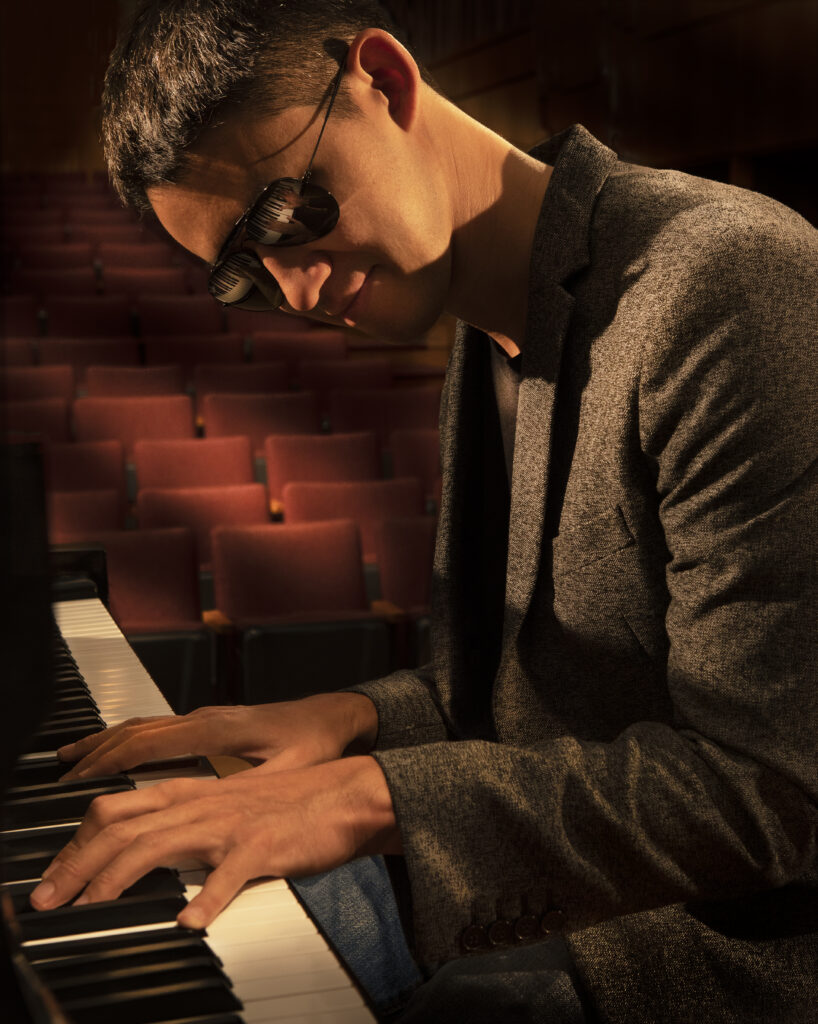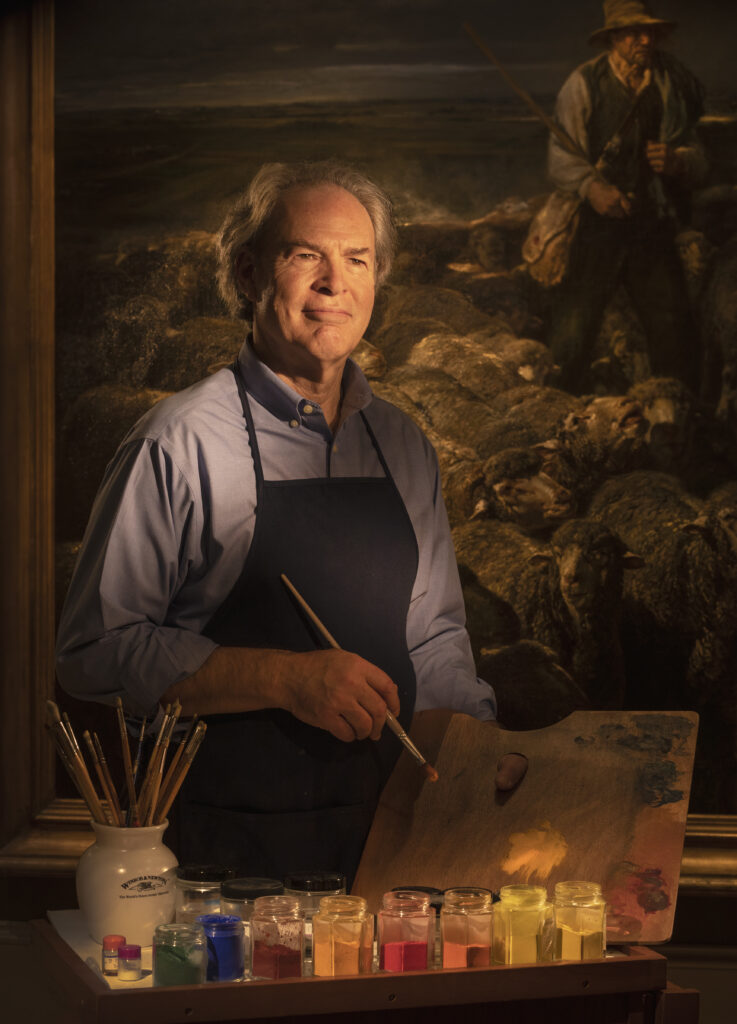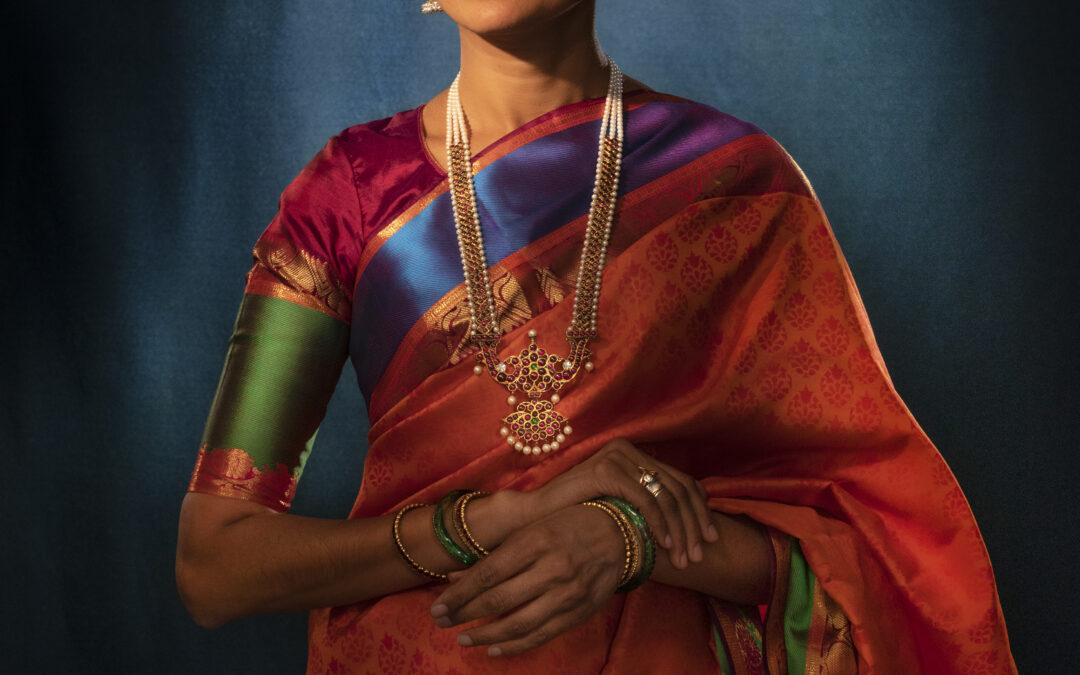(Kumud Vanderveer is stunning colors)
By Jeff Maisey
Renowned Norfolk-based photographer Glen McClure has made a career of capturing people and landscapes in the most dramatic lighting imaginable.
His portrait projects have included working tools, people on the streets, and the faces of shipyard workers.
McClure’s coffee table book, Apprentice to Light, brought into focus images Ireland intriguing west coast. The book is a culmination of his frequent expeditions to counties Mayo, Donegal, Sligo and Cork.
For his latest project, Glen McClure returns mostly to a studio setting using spotlighting (also know as hot lights) to give his subjects a warm, rich glow as if the golden hour of the sunset is eternally beaming.
In advance of the August 27 opening of 100 In The Spotlight: A Solo Exhibition by Glen McClure, on exhibition at Gallery 21 in Norfolk, I caught up with the award-winning, internationally revered photographer to learn more.
VEER: As I recall, you acquired a hot-light setup and then decided to do a portrait series. Lighting is vitally important for a photographer as you have exhibited in both your images of Ireland and portraits of shipyard workers. What is unique about using hot-lights?
Glen McClure: Well, how this project came about is interesting. I had actually purchased many of the hot lights previously for the project I was then working on “Small Tools.” I was looking at tools as pieces of art in their own right. One day, a young man who had assisted with me on a previous portrait called “Eye to Eye” stopped by my studio to tell me goodbye, he was moving to New York City. Since I had my hot lights all set up already, I asked my friend Isiah if I might do a portrait of him using those lights. It came out so well, I wanted to do more of these portraits. So, I started mentally going through my friends list and thinking of whom I might add. Soon enough folks started flowing into my studio and a new project was born. At the time, I had no idea how far I would take this project and certainly no idea I would work on it for a solid year. As time went on and I learned more about using this type of light, I did start to pick up some more used lighting units.
Hot Lights or Spotlights as they are called, project a focused beam of light. It’s a hard type of light. Think of the sun beaming down and the strong shadows you would see on a day like that. That is sort of what you get with this type of light. So, for me, it is way different then what I’ve mostly used in the past, which was electronic flash units that were diffused through a surface, like a photo umbrella or a scrim, something that would make the light nice and soft. Sort of like a cloudy day light, where, you might not see much shadow at all. My new Spotlight style makes for very dramatic light, with hard shadows. My idea was to try and make the subjects “pop” off the background. The project is called “100 in the Spotlight” for two reasons: First, I’m using a spotlight to light each person’s face and also I’m spotlighting each individual with a mini interview bio, hence I’m spotlighting them.
VEER: When shooting with hot-lights, what adjustments do you the photographer make as well as the subject compared to other uses of light?
Glen McClure: First off, these are sometimes called “Hot-lights” because, well, they are hot. After about 3 or 4 minutes of being turned on the bulb gets so hot, it makes the whole lighting unit hot to the touch. I bought some special heat gloves to wear when working with these lights, which really helps .When using my hot-light “Spotlights”, its different right off the bat from the normal way I’ve mostly always lighted my portraits. First of all, the light is a continuous source, meaning you cut the light on and it’s on and stays on till you turn the switch off. There is no waiting for the light to recharge between exposures like when I’m using electronic studio flash lighting. The other thing that is so great with this new set-up is I can control the light using barn doors attached to the front of the lighting unit. By opening and closing these doors, I can control the width of the beam of light coming out of the unit. Sometimes I’ve had the barn doors closed to only, say, a 1/2-inch opening , making for just a tiny sliver of light coming out of the unit. The lights also have a focusing knob on the back, so you can change the size of the beam of the light emanating out of the front of the unit. So you can be very precise as to where exactly you want the light to go.
VEER: The portraits in this series resemble the warmth of oil paintings by the Dutch masters of the 1600s. Is there a similarity in your view?
Glen McClure: Yes, I think you are correct. I didn’t exactly start out thinking about these portraits that way but it became apparent to me pretty soon. The dark, direct shadows and the warm tone has had a few art types who have seen these portraits or posed for me bring up Rembrandt’s name to me. Which made me happy, of course. The warm tone comes from the fact that these bulbs are tungsten light, which emit a very yellowish, warm tone. I have my camera set for a normal daylight setting, so when you first see these images they look way too yellow or red in color. In post production I remove as much of the “too yellow light” as I think appropriate and leave enough of the warm tone to make the images pleasing and unique. It’s all a matter of who the subject is, what they are wearing and what the background might be.
VEER: At first you had people come to your studio and sit for the portrait. Later you went off-location for other shoots. How did this process evolve?
Glen McClure: As I started getting deeper into the project, I realized I could use some variety, so I started asking a few of my subjects if we could shot on location. So, say with the portraits of Mark Lewis and Justin Kauflin, I knew I would have some great props to add to the composition. So, it really just changed as time went on and I could persuade some folks to let me shoot on location.
VEER: Many of your first portraits in this series seemed to focus primarily on the face, hair and hands of your subjects. Your portrait of Kumud Vanderveer (pictured above) is striking in that the rich colors of her traditional Indian clothing and elaborate jewelry add an additional vibrancy. Can you discuss this image?
Glen McClure: Yes, this is one of my favorites from the project. Kumud Vanderveer is someone I met briefly in 2014 when I was doing a portrait project over in Greene County Virginia called, A Portrait of Greene County. Kumud was one of my subjects in that project. Those were all portraits done on location using one strobe light in a soft-box, which made nice soft light, as we discussed earlier. One day, Kumud made a comment on Facebook about how much she liked these new portraits I was doing, so I asked her if she would come to Norfolk and let me photograph her wearing traditional clothes from her native India. She lives three hours away but I was so happy when she said yes to it all. Once Ms. Vanderveer showed me her outfit, I knew a strong blue background would compliment the out fit and make it stand out. I was trying for a bold colorful image in this one. I asked Ms. Vanderveer to describe her outfit and she states: “What I am wearing is a ‘Sari’ – traditional Indian wear for women which is a drape of colorful fabric of 5 to 9 yards with a fitted blouse to match the saree.” “The style of jewelry I am wearing is ‘Kemp,’ which takes inspiration from Tamil Nadu Temple Sculptures. As my Sari is a Kanchipuram Silk Sari, which is also from Tamil Nadu, South India, I matched Kemp jewelry with it.”

(Justin Kauflin)
VEER: Your photograph of jazz musician Justin Kauflin is done on a stage with empty red chairs in the background. I like that you captured the reflection in his sunglasses of his hands on the white and black piano keys. Can you share details and impressions of this image and shoot?
Glen McClure: Justin was the last person photographed for this project and I wanted to make it a special portrait. Most of the folks in this project were folks I knew or had met before. This case was different as I had only heard about Justin but didn’t know him personally. One day I was photographing the great jazz pianist John Toomey as part of this Spotlight project. The subject of Justin Kauflin came up during our discussion and I told John Toomey that I sure would like to photograph Mr. Kauflin. John called Justin right on the spot and the next thing you knew, Justin said if John Toomey, Eddie Williams and Jimmy Masters have done it, count me in! John Toomey teaches music at Old Dominion University and he arranged for me to use the stage over at ODU’s Chandler Hall. This is one image where I had in my minds eye exactly what I wanted to accomplish and it actually came out even better than I had envisioned. The first thing you have to realize is that Justin Kauflin has been totally blind since the age of eleven. The other thing you need to know is that Justin is one of the worlds top jazz pianists and thats the truth!
Justin’s mom Phyllis led him down the theater incline and up onto the stage where I was already set up and excited to get started. Like drawn by a magnet, Justin walks right to the piano, sits at the keyboard and starts playing the softest, most delicate sound you have ever heard. I just stopped and listened for a five full minutes. It was like having none other than the great Bill Evans sitting in front of me! Finally I started talking and got Justin to do some things I had in mind. At this point John Toomey and Justin’s mom had left and it was just Justin and myself on the stage. The one thing that I hadn’t planned on was having the nice red chairs as a background. In my mind I was planning on shooting the opposite direction but once I saw those, I knew it would be fantastic. I used about 8 lights on this image. I worked hard to get Justin to lean in just so and get my spotlight to reflect off the hands and keys and into his dark glasses. I remember being so excited when this shoot was over.
VEER: The portrait of Mark Lewis painting onsite at Chrysler Museum of Art is another highlight of this series. How did this composition come together?
Glen McClure: Mark is the Conservator at The Chrysler Museum of Art and a good friend. He agreed to let me photograph him where he works. I looked up what exactly a Conservator does and found this, “Conservators manage, preserve, treat, and document works of art, artifacts, and specimens—work that may require substantial historical, scientific, and archaeological research. Conservators document their findings and treat items to minimize their deterioration or to restore them to their original state.” “A museum’s prime responsibility must be to maintain its collections and to do everything possible to delay the natural laws of deterioration.” I went over prior to the day of the shoot and scouted some interesting paintings to use as a background. I chose this painting, The painting is called a Shepard and his Flock, by Charles-Émile Jacque, which was done in 1880. The image was chosen for the size of the work and its dark tone, which would help Mark stand out from the background. Mr. Lewis had worked on this painting in the past. I asked Mark if he could be photographed with some of the tools of his trade and he brought an array of beautiful props. This was fun image to light and I used many spotlights to highlight just certain areas, like the paint pigments in the foreground, his face, his hand and the background and so on. I also need a 9-foot roll of paper off to my right to block out some daylight that was streaming through a window.

(Mark Lewis at the Chrysler Museum of Art)
VEER: What do you hope viewers of this exhibition take away from seeing this work and use of hot lighting?
Glen McClure: My main hope is that they will find these subjects interesting. Everyday folks captured in a timeless manner. With just enough drama to hold the viewers attention.
VEER: This is a commercial gallery exhibition so the works are for sale. I imagine the “customer” for each these framed portraits is likely to be the subject in the photograph. True?
Glen McClure: Yes, the works will be for sale. I could see some of the subjects being interested in these and perhaps a family member or friend too. But I never really thought about any of that when starting this project. I just hope to show how interesting people are, how different we all are, yet how much we all have in common. I call my subjects in projects like these ’the great mixing bowl of humanity.”
VEER: As a professional photographer, how many hours and what overall expense went into producing this exhibition — framing and all?
Glen McClure: When I first started out on this project, I only knew I wanted to try and make some unusual, for me, portraits. How many, I had no clue. Before long, I set my sights on making 100 of these. I made 101. I have spent a full year on this project with hardly a day going by I didn’t work on it in some capacity. And yes, I do it all myself, shooting, retouching, framing, caption writing, all of it. I don’t even want to know what this cost me, if I did I’d never do another project like this again! It has been such a joy working with all these folks and spending time with them. A real honor for me.
WANT TO SEE?
“100 In The Spotlight: A Solo Exhibition by Glen McClure”
August 27 through September 30
Opening Reception: August 27, 5-8 PM
Gallery 21, Norfolk




